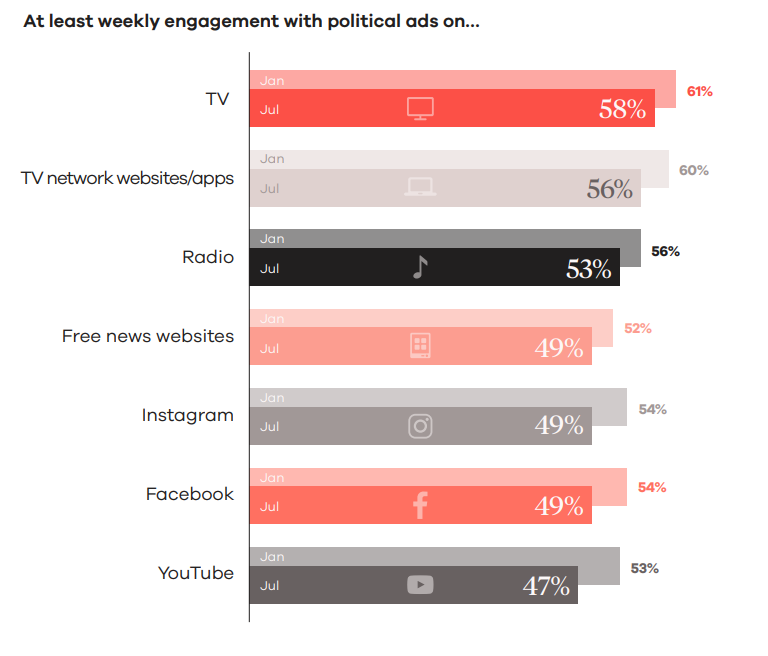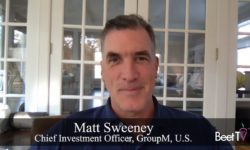Election Day is fast approaching, and people are starting to pay more attention to politics. Since the beginning of the year, the most likely voters have grown more dependent on televised political advertising to help form an opinion about candidates and key issues like the coronavirus pandemic and the economy.
Among those voters who are paying more attention are independents who are crucial in determining the election’s outcome in key swing states, according to the Political Edition of Xandr’s 2020 Relevance Report.
“Back in January, we discovered that independent voters were the least receptive and most difficult to engage with a political ad,” Charlotte Lipman, senior manager of business intelligence at Xandr, said in this interview with Beet.TV. “Now that we’re getting close to Election Day, and independent voters are getting closer to making their election decisions, we see their perceptions of political advertising have improved.”
While political campaigns are more likely to reach those voters now, they also need to be mindful that they don’t form a negative impression with advertising that’s too repetitive. Eighty-four percent of voters said they dislike seeing the same political ads over and over again, while 78% said they don’t like political ads that interrupt what they’re doing, Xandr’s survey found.
“The two best ways to improve advertising would be to reduce frequency of seeing the same message all the time, to improve on the intrusive ad experience,” Lipman said. “It’s no different for political advertising. They want ads to meet them at the right time and deliver new information in a relevant and trusted context.”

Source: Xandr, MarketCast
Likely voters were more likely to see a political ad on television than on other media outlets, making TV essential to political messaging. More than half (58%) of likely voters in July said they’d watched a political ad on TV, while 56% had seen those ads on a website or mobile app from a TV network, Xandr’s study found. Xandr commissioned researcher MarketCast to survey U.S. adults who were most likely to vote.
“Generally, we see positive sentiment toward the 2020 election,” Lipman said. “Voters are proud of the nation they live in, and hopeful for the future, but they’re also aware of the fact that politics has never been more polarizing. Unbiased advertising delivered in a trusted and positive environment has never been more crucial.”
In addition to reach and frequency, political advertisers also need to consider the context of the ad, especially as voters are being inundated with misinformation on social media and websites. Eighty-two percent of voters said it’s important that ads appear unbiased, Xandr’s study found.
“Lack of trust is a main driving force behind the ‘pain points’ that consumers feel toward engagement with political advertising,” Lipman said.
Ad targeting is another key concern, with 54% of voters saying they often see ads for candidates from other states and districts. Connected TV and over-the-top channels can reach constituents without dispersing the message too far.
“There’s been a lot of talk this election season from a CTV/OTT perspective for political advertisers, and we would expect this long after the election,” Lipman said.
You are watching Where We Go From Here: The Lessons and Opportunities of 2020, a Beet.TV series presented by Xandr. For more videos, please visit this page.














































